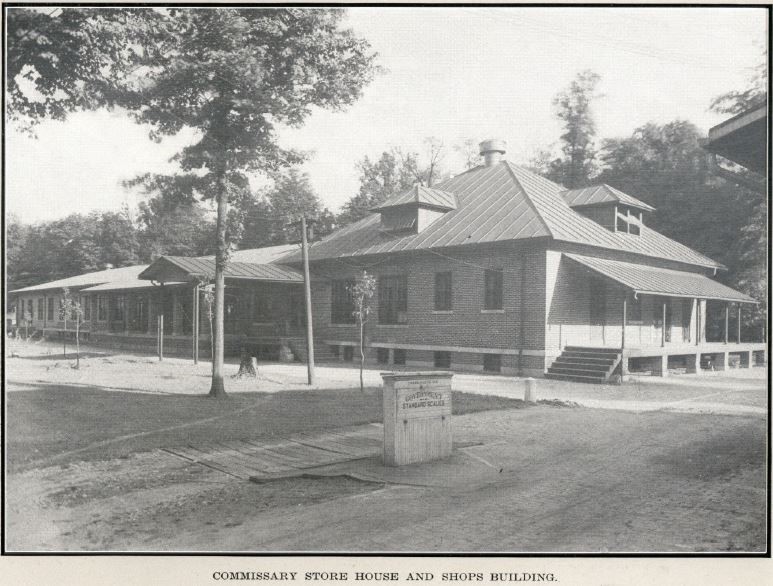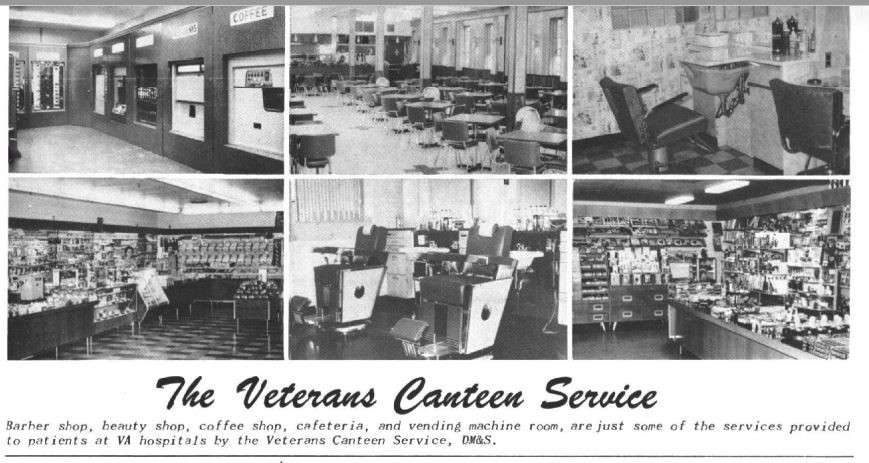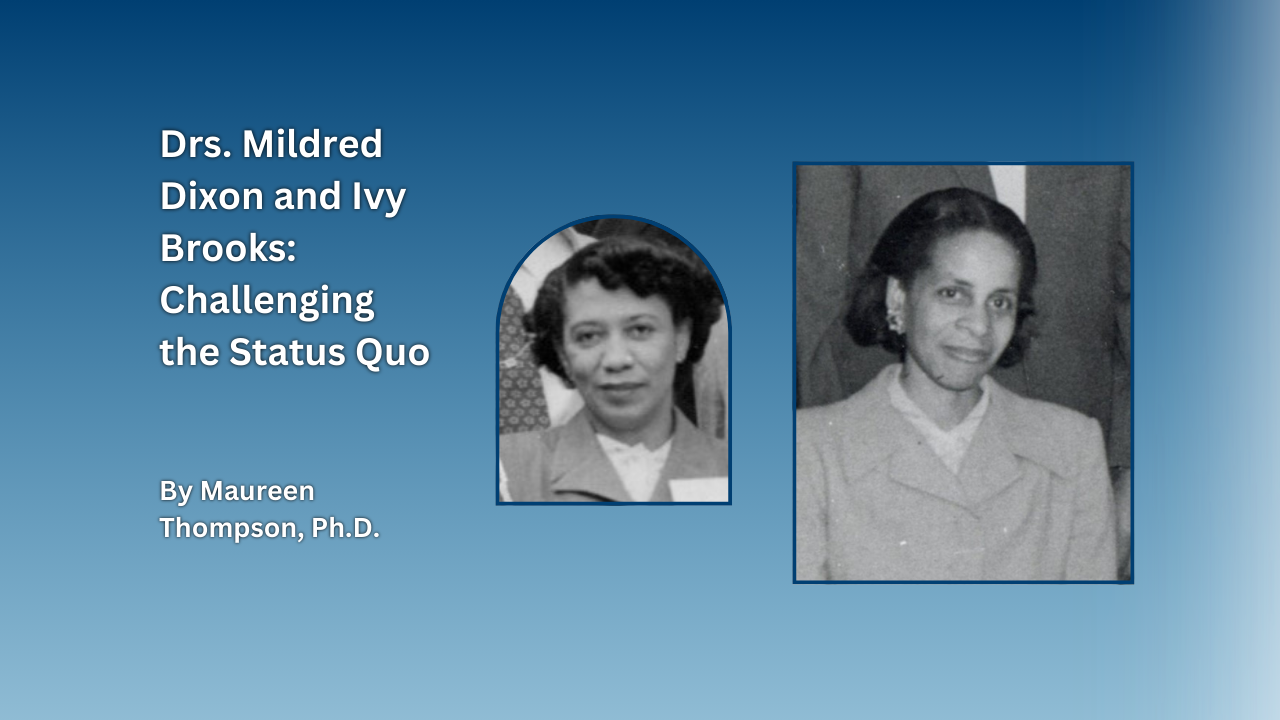
Watch repairs, haircuts, snacks, meals, laundry, photo development, televisions, and Chanel No. 5 perfume. These and many more amenities have all been offered at VA Veterans Canteen Service commissaries, stores, and canteens over the years. Providing goods to Veterans, their families, and visitors has been a staple of VA hospitals since their inception at the end of the Civil War. The Veterans Canteen Service (VCS) we know today evolved out of these early stores and VCS formally celebrates its 75th anniversary in 2022.
The first store providing goods and services to Veterans was located at the Central Branch-National Home for Disabled Volunteer Soldiers (NHDVS) in Dayton, Ohio. Its success paved the way for stores to become fixtures at other NHDVS branches.1 The commissary also served as a source of employment, and so lowered the likelihood of residents traveling to town where they could be exposed to drinking and gambling – a broad societal concern for Veterans of the era. Store profits went back into the operation of the National Homes, funding “libraries, the furnishing of amusement halls, and such other purposes that will best conduce the enjoyment of the men.”2
While individual canteens and stores remained staples at VA hospitals well into the twentieth century, by the mid-1940s, most canteens were operated as private, for-profit entities whose products and services were found to be “deficient” by Veterans.3 In addition, because they were operated by private organizations, canteens were mainly located in hospitals in larger cities, while many rural hospitals where profits were doubtful, were left without.
VA Administrator General Omar Bradley proposed the formal reorganization of the system to ensure that all VA hospitals had a commissary as part of his larger reform plans to Veterans’ health care. An Act of Congress made it official on August 7, 1946, and the Veterans Canteen Service was established as a federal instrumentality within VA.4 Its mission “to make available to Veterans who are hospitalized or domiciled in VA hospitals and homes, at reasonable prices, articles of merchandise and services essential to the Veterans comfort and wellbeing.”

By the end of fiscal year 1948, the first full year in operation, the Veterans Canteen Service had activated facilities in 124 hospitals; while some hospitals expanded existing canteens, others were opened for the first time.5 This coincided with a new emphasis on improving bedridden patients’ accessibility to goods, so ward cart service was expanded. Around the holidays, individuals and organizations frequently bought VCS “coupon books” for hospital patients, who could buy gifts from among canteen goods carted through the wards.
While hospital canteens have changed and expanded to meet the needs of Veterans today, the VCS mission and passion to serve Veterans remains the same 75 years later.
Footnotes
- “The Military Asylums: Meeting of the Managers at Augusta, ME,” New York Times, July 4, 1869. ↩︎
- U.S. Congress, House of Representatives, Annual Report of the Board of Managers of the National Home for Disabled Volunteer Soldiers for 1875, 44th Cong., 1st sess., 1876. ↩︎
- Brian Vorce, “The Veterans Canteen Service is Turning 75,” Vantage Point (blog), May 25, 2021. ↩︎
- Veterans Canteen Service Act, Pub. L. No. 79-636, (1946). ↩︎
- 1948 VA annual report, pg 31. ↩︎
By Katie Rories
Historian, Veterans Health Administration
Share this story
Related Stories
Featured Stories
During the late evening, early hours of April 23-24, 1865, the Black Diamond, a ship on the Potomac River searching for President Abraham Lincoln's assassin John Wilkes Booth collided with another ship, the USS Massachusetts. The incident was a terrible accident during the frantic mission to locate the fleeing Booth before he escaped into Virginia. Unfortunately many lives were lost, including four civilians who had been summoned from a local fire department by the Army. For their assistance during this military operation, all four were buried in the Alexandria National Cemetery, some of the few civilians to receive that honor.
Featured Stories
In the mid-twentieth century, the lives of Dr. Ivy Brooks and Mildred Dixon, two trailblazing Black women physicians, converged at the Tuskegee, Alabama, VA Medical Center. Doctor's Ivy Roach Brooks and Mildred Kelly Dixon shared much in common. Both women were born in 1916 in the northeastern United States and received training in East Orange, New Jersey. They both launched careers in alternate medical professions before entering the fields of radiology and podiatry, respectively. Pioneering many “firsts” throughout their professional lives, both women faced and overcame the rampant racism and sexism of the era.
Featured Stories
After the United States entered World War I in 1917, American Expeditionary Force commander General John J. Pershing requested the recruitment of women telephone operators that were bi-lingual in English and French. Eventually 233 were selected out of over 10,000 applicants, and they served honorably through the war, earning the nickname of 'Hello Girls.'
However, their employment was not officially recognized as military service and therefore were neither honorably discharged, or eligible for the benefits other returning Veterans would receive. This kicked off a 60-year fight for 'Hello Girls' to receive legal Veteran status.






